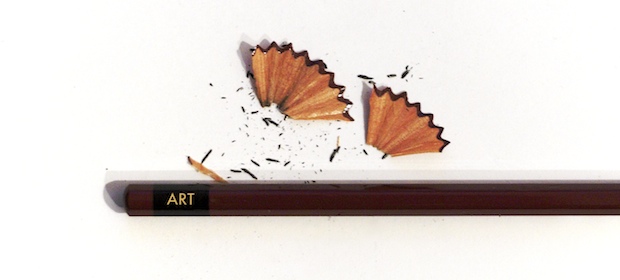Image: Owen Schaefer
Drawing occupies a strange land in the art world. It seems that every other month or so, someone announces the rebirth of drawing (usually coinciding with the opening of an exhibition focusing on drawing, strangely enough) — which of course is the passive-aggressive way of suggesting it had, in fact, been dead up until now.
The reputation of drawing isn’t especially polished by the fact that someone like Damien Hirst, much like Picasso in his day, can scribble just about anything on a paper napkin and expect it to sell. In fact, artists of almost all practices will knock off a few drawings to sell as a kind of side project. Or they create drawings to help envision larger physical projects that they are working on. Painters, might sketch ideas before heading to the canvas. These things not only give the general sense that drawing is secondary or preparatory to “real” forms of media, but make it seem frivolous. The walk before the run. For an artist to take on a series of drawings is considered akin getting back to basics, a step away or a sabbatical from the serious business of art.
But drawing is, and always will be, a fundamental process. It is the very most basic of visual arts – the placement of a line on a surface. A single mark kicks off the dynamics of figure and ground. And like all arts, drawing has exploded, fragmented and re-congealed in various forms since the 60s. But when so many of those forms seem to come from artists of other media returning to drawing as some kind of alternative mode of expression, it’s refreshing to run across someone who takes it seriously.
Yuriko Terazaki has only done a handful of shows, and I knew nothing about her before wandering into Gallery Koyanagi last week just to see what was on. Terazaki’s drawings are heavily photorealistic, and her Music exhibition is comprised of painstakingly detailed images, which even up close could be mistaken for black and white photographic prints.
Photorealism in drawing and painting is nothing particularly new. Still, Terazaki does not wield a pencil like most people. Rather than being an instrument to draw lines, in her hands it is an instrument to create shades. Her subjects in this show are the curves of violins and the baroque details of music European music halls. She seems to paint the graphite onto the paper, and it is difficult to escape the need to discuss how lovingly her subjects are “lit” despite the fact that there is no light – at least in a photographic sense. The feeling of light in these drawings is palpable, particularly in the way that most of her images fade into darkness around the edges, defying the sense that drawing is black figures on a white paper. For Terazaki there is more graphite than paper in the process. She creates a kind of shifting darkness, and we see the form of objects sleeping within.
Subject-wise, Terazaki’s work could be called conservative, almost stodgy. Other shows have featured images of ancient hardcover books stacked in towering piles — something that one might expect to find in the back room of an ancient library — or pools of light on stone stairwells. The drawings are beautiful, but nostalgic, even melancholic, and it’s a little tempting to wonder if Terazaki chose the kind of classical literary and musical images that she did because they seem as preserved and quaint as the reputation of drawing. Somehow I doubt it. But it’s interesting to consider. There is a decidedly vintage feel to these very new works. And you have until the end of May to see them.
-Owen Schaefer









